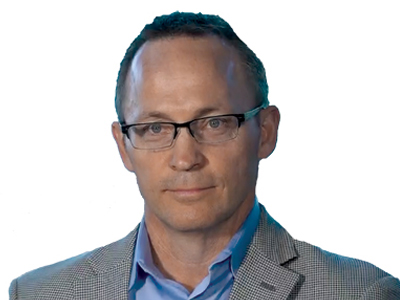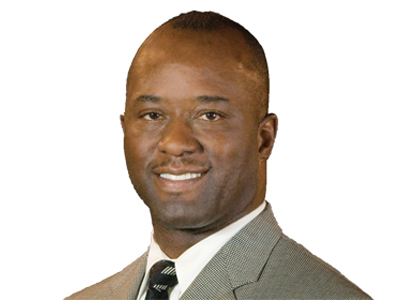Active Shooter
A Response to Tragedy
The insurance industry is creating new policies designed to cover liability from gun violence and to provide benefits to victims.
Photo Credit: Gerald Herbert/Associated Press
Key Points
- Evolving Coverages: In response to mass-shooting incidents, insurers have been exploring coverages to include victim-related costs and liability exposures.
- In Demand: Demand for these policies has increased, as smaller entities now begin to seek coverage.
- Mitigating Risk: Some policies also now include risk mitigation services, including crisis response and post-underwriting assessments.
Columbine. Sandy Hook. Parkland.
From the Texas Tower sniper, who opened fire from the University of Texas clock tower in 1966—ultimately killing 17—to the Las Vegas hotel shooter who fired more than 1,100 rounds into a crowded concert venue, killing 58 and injuring 851 in 2017, mass shootings have been making headlines, sparking gun control debates, and more recently, raising questions for insurers about how to respond.
“The cry of the public is, someone needs to take care of and needs to respond to the victims, to the organizations,” said Paul Marshall, managing director of McGowan Program Administrators, which offers active shooter workplace violence insurance.
Insurers have been stepping up to offer new coverages for venues' gun-related liability exposures, including for victims, such as funerals, crisis counseling, death benefits and medical bills. Insurers also have been looking to expand property insurance beyond physical damage to a building to include coverage to renovate or rebuild in the wake of an emotionally devastating mass shooting.
“The insurance industry has been real pioneers, groundbreaking,” Marshall said.

Chris Parker
Beazley
With the changing face of terrorism, with terrorists going out and damaging individuals rather than necessarily bombing properties, we decided the actual product had to evolve to remain fit for purpose.
A Troubling Problem
Mass shooting incidents happen all too often, leaving behind a trail of bodies and lingering emotional trauma for survivors. And yet, it can be difficult to pin down exactly how many cases there have been, in part because there is no central database and the definition of a mass shooting remains up for debate. A mass shooting has been defined by Mother Jones magazine as one in which a shooter kills at least four people in a public place. Using that criteria, Mother Jones found 99 mass shootings since 1982.
A crowd-sourced database, the Mass Shooting Tracker, defines a mass shooting as one in which four or more people are shot (not necessarily killed) in a single shooting spree. That database recorded 477 mass shootings in 2016 and 427 in 2017. As of late October, there have been 361 mass shootings in 2018.
Recent mass shootings include an incident at the Pulse nightclub in Orlando, Florida in 2016 where 49 people were killed and 53 wounded. An incident at Marjory Stoneman Douglas High School in Parkland, Florida, left 17 killed and 17 injured. The numbers from these and other cases are staggering and numbing.
The shocking nature of mass shootings captures the most national news attention, but on an average day in the United States, 96 Americans are killed by firearms, according to the Centers for Disease Control and Prevention. Only the largest and most dramatic mass shootings receive more than a day's worth of local news coverage.
Most shootings—like the two out of every three shooting deaths that are suicides—receive almost no news coverage at all.
Active Shooter Insurance
In response to active-shooter threats, insurers began launching coverage for venues about three years ago. Businesses and schools were the most common sites for active shooters from 2000 to 2017, according to a study from the FBI.
Mass shootings in places of worship, like the 11 people killed and six injured in the Tree of Life synagogue in Pittsburgh in October, represent about 4% of mass shooting incidents, the FBI said. Venue owners approached insurers looking for cover, and the industry responded, crafting policies that offer financial protection if the unthinkable happens.
Beazley and Hiscox have crafted active-shooter coverage by expanding their existing terrorism policies. XL, now Axa XL, expanded its workplace violence, kidnap and ransom cover.
“On the terrorism side, we typically look at damage to assets and not people,” said Chris Parker, terrorism and political violence focus group leader for Beazley. “With the changing face of terrorism, with terrorists going out and damaging individuals rather than necessarily bombing properties, we decided the actual product had to evolve to remain fit for purpose.”
Beazley developed an active-shooter policy that includes third-party liability, a crisis management component and business interruption coverage.
“The event doesn't necessarily need to occur at your premises,” Parker said. “It can occur within a close proximity, but it has an adverse effect on your business. People stop visiting your business and therefore you lose revenue.” The policy also covers funeral costs and counseling for victims and survivors.
Jennifer Rubin, head of terrorism, war and political violence for Hiscox, said active-shooter-type events are becoming more varied and complex, including instances in which terrorists use vehicles as weapons. The industry is responding, but each company's terms and conditions are different, she said.
“Our policy for active shooters was written specifically to cover the active-shooter event,” Rubin said. “We're defining the event. And we have parameters in place identifying the period of indemnity, the deductible in place, and a very specific contract definition of coverage so the client knows exactly what they'll be covered for.”
The market is changing every day, she said.
“We don't all think like terrorists and everything changes,” Rubin said. “Nobody expected a van to run over a group of people in Nice, France [in 2016]…. Every single day when something new happens, terrorist underwriters sit back in their chairs and think, 'How am I going to evolve my product so that I'm relevant for my insureds and we're providing the services and coverages that they need following these attacks?'” she said.
Denise Balan, senior vice president and head of U.S. kidnap and ransom for Axa XL, said the kidnap policy had offered an extension known as an “assault cover,” which would be triggered by weapons used in a workplace setting.
“But it became clear over the last several years that it was insufficient to truly address the duty of care concerns that our insureds were coming to us with,” Balan said.
“At that point, we decided … [to launch an active-shooter policy] allowing for legal liability costs as well as for off-site coverage to allow clients to have a little more confidence that they were doing the most that they can for their insureds,” Balan said.
Axa XL also picks up extra expenses associated with legal liability, defense costs as well as a judgment or settlement costs, additional medical, psychological costs and some business interruption for a workplace shooting, Balan said. The costs of a mass shooting can easily run into millions of dollars.
Virginia offered an $11 million state settlement to compensate families who lost loved ones, pay survivors' medical costs and avoid a court battle after the shooting that killed 32 people at Virginia Tech in 2007.
Harry Rhulen, co-founder of Firestorm, a crisis risk management firm, was on the ground at Virginia Tech for two weeks following that shooting. “We brought in counselors, lawyers … the expenses ran into the hundreds of thousands of dollars just for the crisis response aspect of it,” he said.

Paul Marshall
McGowan Program Administrators
The traditional coverage required a lawsuit. This is a no-fault coverage that within 24 hours … we’re reaching out to victims’ families, helping the community heal, helping the families heal.
Evolving Policies
Policies have continued to evolve in 2018, with insurers adding more victim coverages, including funeral, crisis counseling, death benefits and medical bills, McGowan's Marshall said.
Insurers offered these coverages following the public response to the shootings in Las Vegas and Parkland. After the Las Vegas shooting, citizens donated $31 million in 90 days for victims, he said. After the Parkland shooting, the Florida State Legislature agreed to pay funeral costs and medical bills for victims.
“The traditional coverage required a lawsuit,” Marshall said. “This is a no-fault coverage that within 24 hours … we're reaching out to victims' families, helping the community heal, helping the families heal.”
In addition to new coverages for victims, insurers are exploring new property coverage. Insurers have long provided coverage for property loss, but they are now looking at coverage that goes beyond physical damage to a building. After a mass shooting, especially in a public setting, the emotional toll of returning to the site can be deemed too great, and officials often opt to tear down the building and rebuild.
It took five years and $50 million, for instance, to tear down and rebuild the Sandy Hook Elementary School in Newtown, Connecticut, the site of the massacre of 20 students and six teachers in 2012.
Parkland, meanwhile, has asked Florida for $28.5 million to replace the building where the shooting occurred.
“These are the financial concerns of our clients,” Marshall said. “What we did was build a property program with a mental anguish trigger that allows an insured to transfer that financial exposure to an insurance mechanism.”
Demand Increasing
With so many high-profile mass shooting incidents in the news in recent years, insurers and MGAs say more clients are calling to see what insurance is available. “Because of the number of incidents and because of the publicity that are attended to them, and because the threat is growing and the perception of the threat is growing, there's more demand for policies,” said James Lynch, chief actuary with the Insurance Information Institute.
Marshall, who works with both Beazley and Axa XL, said demand has grown from 20 to 30 submissions a month in the spring of 2017 to 200 submissions a month as of October 2018.
While large entities—larger school systems, health care systems, parades and high-focus events—were the first to buy the coverage, today smaller entities, such as churches, day care centers and delis are seeking coverage. “It's evolving to an almost 'Main Street' type of coverage,” Marshall said.
The concern is understandable, but many of these fears may be overblown, said Peter Kochenburger, an associate clinical professor at the University of Connecticut School of Law.
“Many of these losses are already covered if they have liability, workers' compensation, health and all of that … we all agree every one of those events is a tragedy, but the chance of any individual school or business having an active-shooter event is [one in a] million,” Kochenburger said.
He said he saw marketing material that called active-shooter insurance “the next cyber.”
“I really thought that was really unfortunate and perhaps irresponsible,” Kochenburger said. “We all know that cyber events, cyber hacks occur every day, and perhaps, to every company. Thankfully, we don't live in a world and hopefully never will, where that's remotely true for active shooters.”

David Blades
A.M. Best
I think that a comprehensive approach as opposed to a specific policy for active shooters is much more promising and valuable. At some point you might be better off with a good liability policy than a narrowly targeted [policy].
Prevention and Crisis Response
Active-shooter coverage can also include a prevention/crisis response component.
“When there's been any kind of adverse event, an insured will call two people: their insurance agent and their lawyer. What they want to know from those people is, 'What do I do now?' It's not business as usual. It's business as unusual,” said Firestorm's Rhulen.
“These people don't know what their next step is. They need someone to advise them on what to do or say, or very often, what to not do or not say…. Very often, their crisis response becomes their next crisis.”
Firestorm worked with Beazley in developing their active shooter and deadly weapons policies from an underwriting guidelines standpoint.
In the workplace, most violent incidents are a result of hiring, firing or discipline, Rhulen said, and corporate culture and the way these events are handled can make a big difference in whether there is an event or not.“It's not the type of organization they are,” Rhulen said.
“It's not their exposure in a crime-ridden area. It's really how they manage their business,” he said “Most workplace violence events are as a result of hiring, firing or discipline. Those kind of things are very significant in how the organization responds but also whether or not it's preventing these type of things from happening.”
On behalf of Beazley, Firestorm does a post-underwriting assessment of every insured.
“What is their culture? How do they treat their people? How do they handle hiring, firing, discipline? How do they handle people who come through the front door of their business who have a complaint? Do they have in place the appropriate type of workplace violence prevention program?” Rhulen said. “That's what determines whether a situation escalates from a behavior of concern to something that results in a workplace or school violence type of situation.”
One crucial point for employers is how they handle employees who are fired. “One of the things that an employer should absolutely avoid is what we call the 'walk of shame,' where terminated employees pass by their peers as they are escorted out of the building,” Rhulen said.
That scenario, he said, adds humiliation to an already stressful situation. “We regularly run into situations where human resource departments have not been trained in how to appropriately manage a firing,” Rhulen said.
The risk management services, such as the crisis response assistance and post-underwriting assessments that are now included with some active-shooter coverages highlights the proactive approach the industry is taking, the III's Lynch said.
“We're trying to create a policy that's a bit more proactive … to head off the threat before it blossoms into some kind of tragedy,” Lynch said.
The risk mitigation component may be the most valuable aspect of active-shooter coverage, said David Blades, A.M. Best senior industry analyst. “I think that a comprehensive approach as opposed to a specific policy for active shooters is much more promising and valuable,” he said. “At some point you might be better off with a good liability policy than a narrowly targeted [policy].”
“The risk mitigation assistance that [a policy] can provide is maybe the most valuable portion, whether it's an active-shooter policy or any of those other policies, particularly for small companies that, otherwise, don't have access to it.”



























